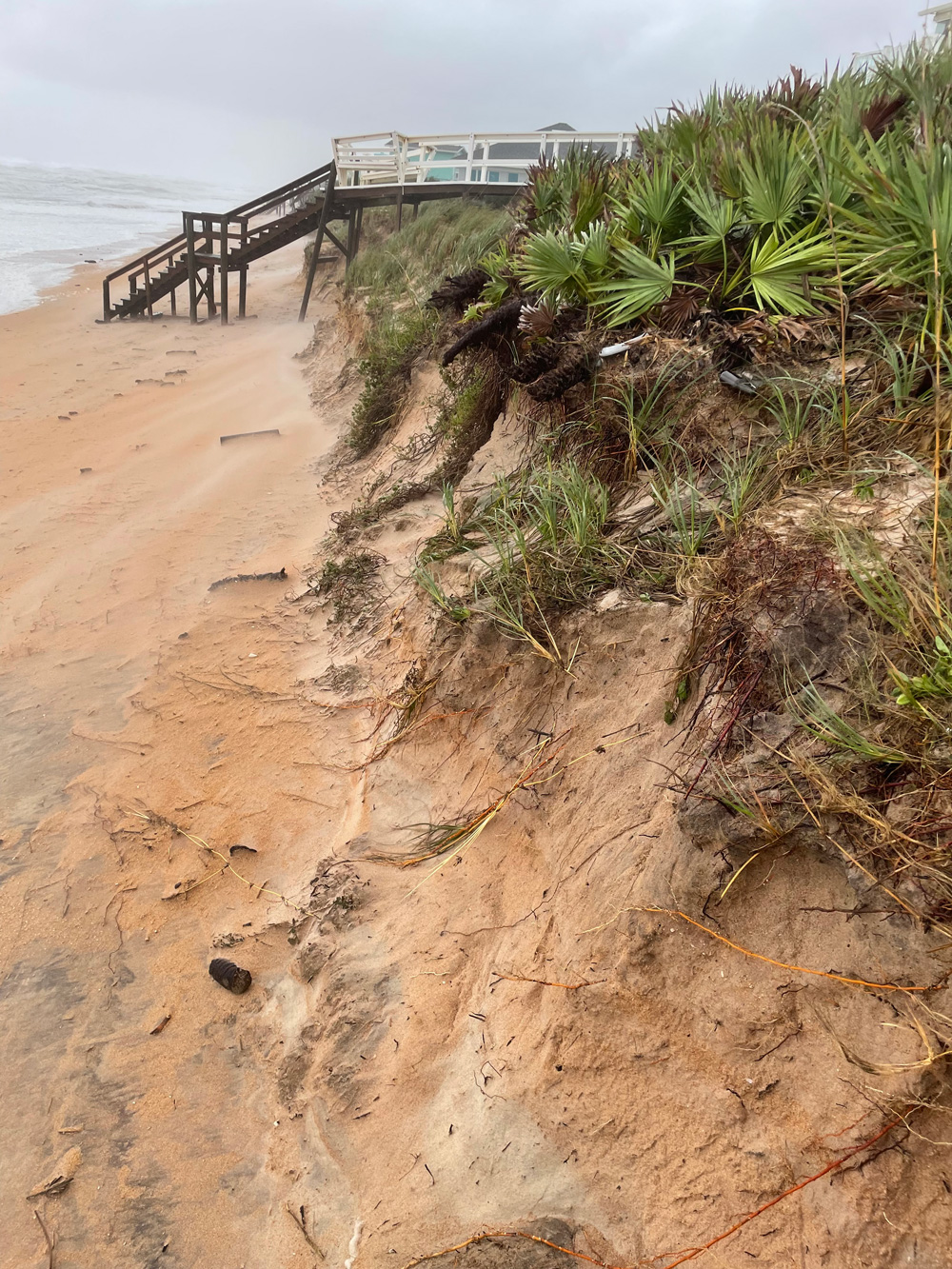
The University of North Florida and National Park Service announced the NPS has awarded nearly $800,000 to UNF to ramp up efforts to restore local coastlines and battle shoreline erosion at three national parks in Florida and Georgia.
UNF President Moez Limayem, NPS representatives, members of the UNF Institute of Environmental Research and Education community council, and students and faculty made the announcement today at Kingsley Plantation at the Timucuan Ecological and Historic Preserve, one of the project sites.
“It’s inspiring to see the years of research and dedication from UNF faculty and students that brought this impactful restoration project together,” said President Limayem. “We look forward to continuing to work with the National Park Service to protect and preserve our coastlines for future generations.”
The project is based on research by Drs. Raf Crowley, civil, coastal and port engineering professor, and Kelly Smith, biology associate professor emerita, utilizing pervious oyster shell habitat (POSH units) that create living shorelines that help restore coastal ecosystems and sustain against the impacts of coastal erosion. More than 100 units have been installed at Timucuan Ecological and Historic Preserve and Guana Tolomato Matanzas National Estuarine Research Reserve so far.
The POSH units will be expanded at the Timucuan Ecological and Historic Preserve, where efforts began in 2022, and new units will be installed along the coastline at Fort Matanzas National Monument and Cumberland Island National Seashore. The grant will be used to purchase a concrete batch plant, a machine only available at a few universities in the world, which will help UNF researchers improve production of the POSH units. Faculty and students in advanced manufacturing and material science courses will also utilize the machine for research and teaching.
“The Timucuan Ecological and Historic Preserve and National Park Service are proud to partner with UNF to protect and enhance shorelines along the Georgia and Florida coasts,” said Chris Hughes, NPS’s Timucuan Ecological and Historic Preserve superintendent. “This partnership focuses on preserving the invaluable ecological services, natural resources and recreational opportunities provided by our shorelines. By combining the preserve’s expertise in conservation and UNF’s strengths in research and innovation, we aim to address critical issues such as shoreline erosion, habitat protection and sustainable recreation.”
Shorelines are badly eroding in Florida and Georgia. Over the past century, natural oyster reefs have also disappeared at an alarming rate due to commercial oyster harvesting and other factors. If this continues, it could represent an ecological catastrophe because oyster reefs are a critical component associated with salt marsh ecosystems that provide benefits including shoreline protection, nutrient filtration and habitat for aquatic organisms.
UNF deployed several POSH units last year along two stretches of coastline at Kingsley Plantation in the Timucuan Ecological and Historic Preserve, a site with significant historical significance. Preliminary data from these deployments indicate that the POSH units reduce the effects of wave energy under certain conditions, trap sediment, promote shoreline accretion and recruit oysters at a much faster rate than similar structures designed to restore oyster reefs, without the use of plastics that could degrade and harm the environment.
UNF students will assist in the construction and deployment of these new modules. Workshops will be provided on “how to build POSH units” to community organizations. The community will also be invited to be involved with living shoreline installations throughout this project.




























pete says
More money to be washed away, your not going to stop it.
Deborah Coffey says
“Restoration” is not the way to deal with climate change. We’d better stop pissing money into the wind and spend it on real and sincere efforts that will save our planet.
JimboXYZ says
I don’t recall seeing anyone from UNF rebuilding coastlines. Maybe they asked the Faucian-like expert(s) what could be done for the oyster beds that have been harvested ? The oysters are removed from the Gulf Coast side, why they call them Apalachicola Oysters ? so that would FL => AL, & not FL => GA. See this is what oyster beds are, they are shells with living mollusks that live in the shells. There’s no substitute for replenishing them beyond replacing them with exactly what was harvested as oysters. As for the foliage of the dunes, there isn’t much there beyond palms, sea oats & sticker burr patches. What am I missing here ? A grant for the obvious ? Environmental impacts of the human race with no real solutions as usual beyond throwing money at a self-proclaimed expert again ?
celia pugliese says
Exactly…Jimbo
Kat says
That is positive news, thank you.